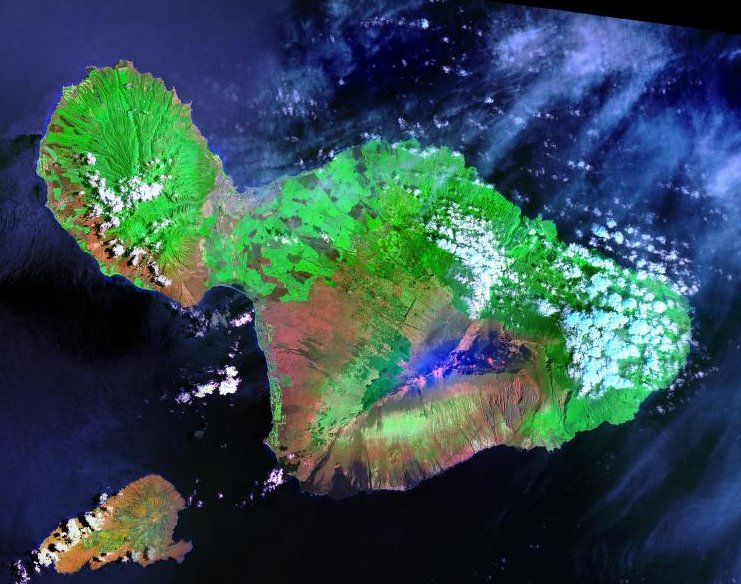Hawai’i may often be depicted in colors of blue water and green tropical plants. But now, Lahaina, on Maui, is charred brown. Lahaina lost lives: the total of fatalities in the worst fire in US history is still rising, already surpassing deaths in California’s Camp Fire of 2018 that killed 85 people and destroyed the town of Paradise.

While heat, drought, and wind created conditions for fire, Lahaina’s municipal systems might have made it worse. Hydrants, placed along city streets for emergency water access, produced little to help firefighters. Lahaina’s water infrastructure draws water from a creek and from wells underground. But when the ravaging fire melted delivery pipes, causing them to burst, losing precious water, those leaks, in turn, affected the pressure of the whole water system, including the delivery of water to hydrants.
As the climate warms, and droughts increase, wildfires may be more frequent. In 2022, seven countries’ capitals surpassed 40-year high temperatures In South Korea, 42,000 acres burned in a fire in Uljin. In Algeria, a fire in the region of Al Taref consumed 14,000 acres. In Argentina, Corrientes province suffered a fire that charred 2, 223, 948 acres.In the USA, the named McKinney Fire burned 60,000 acres. That same year, in the European Union, over 2 million acres burned.

Fire also damages essential infrastructure. Lahaina’s water system suffered damage; that’s not an unusual effect of fire. In Australia, when heat rose to 151 degrees Fahrenheit (66.3 Celsius) and winds gusted to 79 miles per hour (128 kilometers per hour), Snowy Mountains Hydroelectric lost some power when NSW grid links went down; 14,000 people lost electric power. Fire damaging water – the very element needed to quell flames – is not a new phenomenon. In 1633, famous landmark London Bridge suffered a fire that damaged its waterwheels, thereby preventing pumping water to stop the flames. In Lahaina, Hawaiian Electric equipment and infrastructure of Hawaiian Electric, serving 95% of the state’s residents, suffered damage to power lines. With electric and water system affected by the fire, Lahaina’s infrastructure proved to be a factor in the scope of the disaster. An early assessment of the cost of Lahaina fire damage: $6 billion. Lahaina is both a tragedy and a warning.

How can we protect people and property from fires developing from heat, drought, and winds? Here are a few ways:
Assess water systems to protect hydrants and pipes
Climate-proof power grids and essential infrastructure
Limit plants (avoid non-native) and vegetation near buildings
Strengthen regulations for construction materials, emphasizing cement, stone, or stucco
Require tempered glass in windows to reduce window blow-out that fans flames
Test signal systems and err on the side of caution when issuing warnings
It is true that preventive protective measures are costly. But post-fire rebuilding costs are 10 to 50 times suppression costs. Global predictions for climate-related wildfires may reach $50 billion – $100 billion annually by 2050. While the world surely needs to quell warming; meanwhile, directing funds and attention to prevention of future fire damage is important. This will be an area of significant innovation, applicable globally.

Lahaina’s fire was ultimately stopped by water. Flames expired when they had consumed vegetation (some non-native that burned faster) and buildings, until the blaze reached the ocean. People fleeing burning homes endangered their lives to save them by jumping into the Pacific waters. The water system of Lahaina must now be rebuilt. Can the waters of the Pacific help? Maybe. Seawater contains salt, corroding the very means of its conveyance. Moreover, salt water damages vegetation, buildings, and even fire equipment. In the future, desalination innovations may make it possible for coastal areas to use sea water for many purposes, including fire response.

HOW TO HELP:
Contact: Hawaii Community Foundation or Maui United Way, Maui Food Bank.
Visit redcross.org or text HAWAII to 90999 to make a donation.
For those who lost pets, Maui Fires Pets Help Group may provide help.
Baker, Mike, Kellen Browning, and Nicholas Bogel-Burroughs. “As Inferno Grew, Lahaina’s Water System Collapsed.” 13 August 2023. The New York Times. https://www.nytimes.com/2023/08/13/us/lahina-water-falure.html
Howard, Peter. “Flammable Planet.” September 2014. https://costofcarbon.org/files/Flammable_Planet_Wildfires_and_Social_Cost_of_carbon.pdf
Kartit, Dina et al .”Wildfires breaking out across the world.” 24 August 2022. Reuters. https://www.reuters.com/world/europe/wildfires-breaking-out-across-world-2022-07-19/
Building the World Blog by Kathleen Lusk Brooke and Zoe G. Quinn is licensed under a Creative Commons Attribution-NonCommercial-NoDerivs 3.0 U
